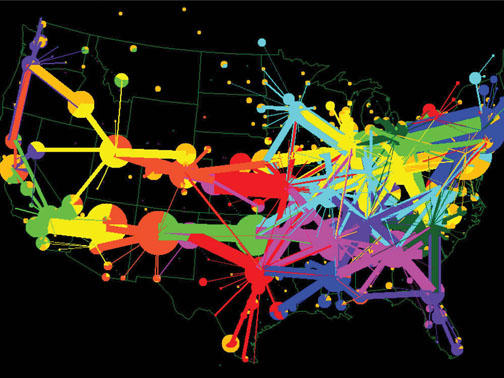BREAKING GROUND - Operations research
Operations research and financial engineering. Professor Warren B. Powell ’77 says the name of his home department is enough to induce blank stares from those unfamiliar with the field. Fortunately, Powell has a quick explanation of the research he has applied to the transportation industry for more than 25 years.
“Look around the room,” he says. “Everything you put your eyes on moved by some combination of truck and train, and often by ship.” The carriers may be technologically simple — a truck is just a truck — but the networks in which they operate are filled with complexity. Powell and his colleagues use mathematical models to simulate problems within these networks, such as assigning drivers to truckloads of freight.
Powell’s list of research partners includes UPS, NetJets, and trucking giants Yellow Freight and Schneider National, but it’s the flow of information and decisions that drives his work, not planes and trucks. The concepts he uses to model a company’s dispatch center also can be applied to choosing a restaurant or setting the lineup of a baseball team. Operations research, he says, “is the mathematics of everyday life.”
With that universality in mind, Powell is applying his transportation-dispatch model to a new research focus: energy. Utility-grid operators continually make decisions about the mix of energy sources — such as coal, wind, and solar — used to serve customer demand. His goal is to understand how those decisions are made and how the daily choices will shape energy investments over time.
Working with colleagues at the Lawrence Livermore National Laboratory, Powell is developing an energy model for California, a state that has set a goal of using renewable sources to produce 20 percent of its energy by 2020.
The model uses stochastic programming, a mathematical approach that aims to account for uncertainty. (In the energy world, such uncertainty could include hurricanes that shut down oil refineries or technological advances that reduce the cost of renewable sources.) But more important, Powell says, the model will simulate the long term — 30 years — in fine-grain, hour-by-hour detail. In a run-time of four to five hours, his computer program can digest more than 250,000 hourly snapshots. “We want to answer the big questions,” he says. “But in order to answer the big questions, we need to answer the small ones.”














No responses yet